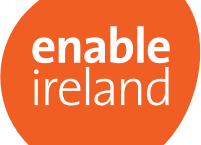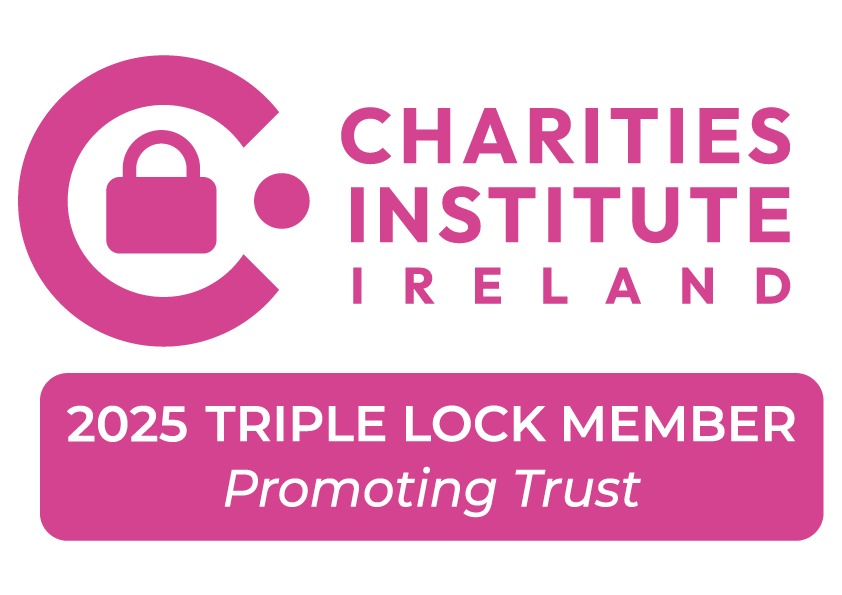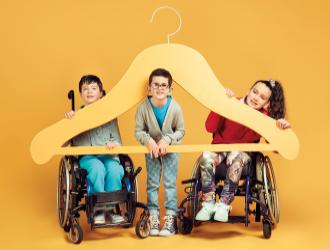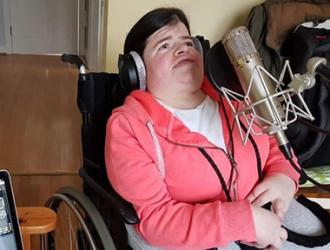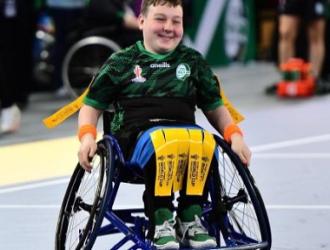The use of unfamiliar words and phrases can sometimes be overwhelming, this glossary of terms helps explain some of the most commonly used ones.
Accessible/Accessibility
Refers to the ease of use or participation by a person with a physical disability and is commonly applied to both physical and social contexts. For example physical as well as social barriers can prevent a person with a disability from equal and dignified access to facilities and educational opportunities.
Advocate
A person who represents and speaks on behalf of the person with a disability and/or a special educational need.
Advocacy
A practice carried out by or on behalf of an individual or group, which tries to redress the imbalance of power in society. Advocacy is a powerful tool that individuals with disabilities can use to participate fully in society.
Self-advocacy is where a person speaks up for his or her rights.
Family Advocacy is where a family member advocates for a person with a disability.
Assistive Technology
This is equipment which supports and enhances the lives of people with physical disabilities, in many cases making fundamental activities such as communication and mobility possible. As with technology in general, assistive technology is changing rapidly and having a significant positive impact on the quality of life for people with disabilities.
Assessment
The evaluation of the developmental status and intervention needs of a child/family.
Assessment Co-ordinator
The person who co-ordinates the assessment process and may also produce the assessment report. Under the Disability Act 2005, the Assessment Co-ordinator is officially known as the Assessment Officer. Under the EPSEN Act 2004, the Assessment Co-ordinator may be:
The Special Educational Needs Organiser (SENO)
The Principle of the School
Assessment Officer
The Assessment Officer is employed by the HSE and is the first point of contact for the person with a disability (or the parent of a child with a disability) who makes an application for an Independent Assessment of Need under Section 9 of the Disability Act 2005. The Assessment Officer determines the scope of assessment required for the person concerned and arranges with the appropriate professionals to have it carried out.
Cerebral Palsy
Cerebral palsy is a physical condition affecting the part of the brain which controls movement and posture. This is why people with cerebral palsy cannot control their muscles very well, they may move jerkily or hold themselves awkwardly.
Cerebral palsy can be caused by a number of things such as an illness during pregnancy or a lack of oxygen as a result of complications during birth or as a result of a serious accident or illness after birth. The degree of severity ranges widely. Some people are only mildly affected, taking only a little longer than others to sit up and walk etc. People with a moderate degree of cerebral palsy may require a wheelchair or walking aid for mobility. Some people are affected very severely and can do very little for themselves physically.
Therapy and special aids can help someone with cerebral palsy to control the movement of their muscles and maximise their ability to move.
More important than therapy however, is empowering people with cerebral palsy to lead independent lives. This means viewing cerebral palsy not so much as a medical question but rather as a social question.
Cognition
‘Thinking skills’ which underlie a person ability to perceive, attend to and learn from the environment. Cognitive ability, eg problem solving, attention span, memory, is required to learn skills in all areas.
Consultation
A consultation is a one-off assessment of a child requested by a third party (therapist, technician or other) with a specific objective of receiving an opinion or advice, or using external expertise which will benefit the service user. A formal report is completed after the consultation and given to the referrer and or child/parent/guardian as appropriate. Ongoing intervention is not part of the consultation process but further intervention may be arranged where is it a recommended outcome resulting from the consultation. For example, a referral for a consultation with the Postural Management Service in Dublin by Kerry Children’s Services.
Disability (Definition from the Disability Act 2005)
Disability, in relation to a person, means a substantial restriction in the capacity of the person to carry out a profession, business or occupation in the State, or to participate in social or cultural life in the State by reason of an enduring physical, sensory, mental health or intellectual impairment.
Persons with a disability entitled to services in Part 2 of the Disability Act 2005 are those with a “substantial restriction” which is permanent or likely to be permanent, results in significant difficulty in communication, learning or mobility or in significantly disordered cognitive processes and requires that services be provided continually to the person whether or not a child, or, if the person is a child, that services be provided in early life to ameliorate the disability.
Early Intervention
Intervention undertaken to influence the development and learning of young children (birth to six years) with or at risk of developing disabilities (Collum 2002).
Early Services
Services provided to a child up to the age when they start primary school.
Family-centred Services
A method of service delivery that: recognises parents as the experts on their child’s needs; promotes partnership between parents and the service providers; and supports the family’s role in decision-making about services for their child.
Fine Motor
Relates to the use of the small muscles of the body such as those in the face, hands, feet, fingers and toes.
Gross Motor
Relates to the use of the large muscles of the body such as those in the legs, arms, and abdomen.
Holistic
In the context of service delivery, a holistic approach is one focused on the service user’s total life needs and priorities. Responses are planned in an integrated way, with the aim of helping to enhance the person’s whole quality of life.
Hydrotherapy
A form of therapy where the effects of immersion in warm water and the physiological effects of exercise can be combined to benefit the person.
Individual Service Plan (ISP)
The individual service plan is a written document prepared by an interdisciplinary team describing the individual needs of a person and the goals of the services to be provided.
Interdisciplinary
This model of team working provides a formal structure for interaction and communication among team members and encourages them to share information. Each team member is responsible for developing the goals relating to their professional discipline as well as contributing to the joint service plan. Parents and family members are usually part of the team.
Interdisciplinary Assessment Team
The team is comprised of professionals from several disciplines. Evaluation can be a mixture of joint and individual assessment. The members collaborate with each other to interpret their findings and design intervention programmes.
Key Worker
An identified and agreed person who will be your main point of contact.
Mainstream/Mainstreaming
This refers to the complete integration of people with disabilities into the social fabric of their local community. This includes integration in the areas of education and employment as well as in the community's social and cultural life.
Motor
Relating to the ability to move a part of or the entire body.
Multidisciplinary
This model refers to a team or collaborative process where members of different disciplines assess or treat service users independently and then share the information with each other.
Multisensory Room
A specifically designed environment which enables a child with special needs to enjoy a wide range of sensory experiences (vision, sound, touch, smell and taste) for therapy, learning, relaxation and fun.
Muscle Tone
The amount of tension in a muscle. It is important for movement and posture. Disturbances in muscle tone can be either hypertonia, hypotonia or dystonia.
Muscular Dystrophy
Muscular dystrophy is marked by a weakening and degeneration of muscle fibre. It is genetic. Although the nerve connections to the fibre remain unimpaired, the muscle is replaced by fatty tissue. Muscular dystrophy is recognised in the first few years of life by weakness and difficulty in getting up from the floor. The diagnosis is confirmed with findings of very elevated muscle enzymes in a blood sample taken by a doctor. The rate of dystrophy varies from person to person.
Orthotics
An orthosis is a device which is prescribed either to provide support, correct or prevent deformity, or to offer protection to a body part. It may act on one or more joints, depending on the function required.
Perception
Relates to knowing the position of your body in space; judging the distance between objects or between yourself and an object; being able to differentiate between the right and left sides of your body; knowing where to fit a piece into a puzzle.
Person-Centred
Person-centredness is defined as seeking to put the person first. A person-centred service is one which is provided, organised and designed around what is important to the service users from his/her own perspective. Person-centred services direct effective supports to facilitate these individual choices.
Postural Management
The management of a person’s posture at all times and in all environments. Where traditional approaches tended to focus on treatment and active exercise, Postural Management focuses on positioning in lying, sitting and standing.
Referral
Children aged 0-18 years referred for consideration of access to services, screening assessment, Independent Assessment of Need and possible admission to Enable Ireland children’s service. For more information on referral visit the information bank.
Service User
A child, adult, parent, guardian or family member who receives services from Enable Ireland.
Social Model
This holds that it is society that disables people with impairments by the way in which it is organised and by the conventions and priorities it displays. The social view or model of disability argues that disability is a direct consequence of people’s attitudes and the way things are organised.
Spina Bifida & Hydrocephalus
With spina bifida a portion of the spinal cord and its membrane are exposed due to incomplete development of the spine. The severity of spina bifida varies - babies with spina bifida may be paralysed from the waist down. Spina bifida is often associated with hydrocephalus which is a build up of excess fluid in the head.
Transdisciplinary
The transdisciplinary team crosses disciplinary boundaries so that all team members teach and learn the basic terminology and intervention procedures of the other disciplines represented in the team. Parents and families are always full of members of the team and, in many situation, take a lead role. The team jointly assesses the individual and draws up an integrated... CONTENT TO BE INCLUDED HERE
